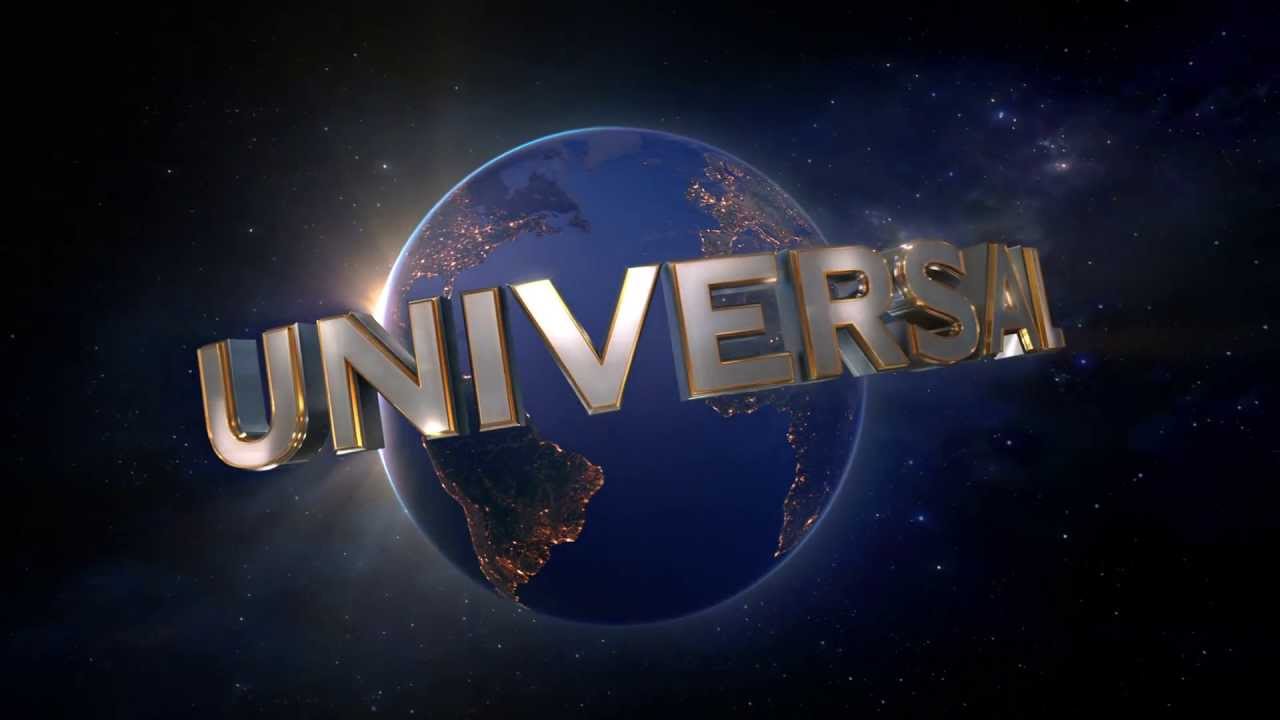Tinder’s “Sexiest Job” Survey Results Reek of Sexism3

I love it when I see a cool piece of data — and a Tinder survey seemed like the perfect way to get a pulse of today’s youth’s preferences when it comes to their partner’s jobs.
I recently came across this survey from 2016 — a bit dated but not in the context of the question it puts forth.
What are the professions that men and women are most likely to “swipe right” for? Exciting, isn’t it?
What’s going to land me the most dates is definitely a worthy modern-world consideration to keep in mind when choosing a career. Or when choosing a profession for a fake profile — not an uncommon occurrence on these dating apps.
But the excitement of wanting to look at the results, soon turned into a bit of a disappointment and a lot of anger after I went through the list.
To begin with — here’s the list according to the survey — the list on the left is the most desired profession in a man, and the right is for the most desired profession in a woman.
Image created by author | Survey results from Tinder Survey
The #1 Spot — Pilot vs. Physical Therapist
It is interesting to note the most coveted profession in your partner. You see “pilot” on there and you kind of get it — right from when we’re kids and are asked “what do you want to be when you grow up” — a pilot often makes the list.
A pilot is everything — it’s cool and “macho” to fly planes, you get to travel the world as part of your job, there’s definitely a solid financial aspect that comes with it, and in general you’d expect a well-traveled man that flies planes for a living to be intellectually smart as well. Add to that the appeal of the pilot’s crisp uniform — the perfect alchemy.
Even statistically, the profession is heavily biased towards men — so sort of understandable the profession doesn’t show up in the women list. Only 5–7% of all pilots are women — an abysmally low number.
Now, let’s talk about the “physical therapist.” Physical therapy is a whole lot more than massages — it is a field that deals with diseases, injuries, and deformities via various methods such as massage, heat treatment, and other practices.
Yet, to the average sex-obsessed Tinder user, it probably directly translates to “masseuse” which further translates to “great sex.”
Well, hey! What better person to go on a Tinder date with and hopefully end up in bed with, than that? This is an unfortunate reality of how a woman who is a physical therapist is perceived by a gutter-minded group of people.
This isn’t an issue of today — it has been going on for centuries — as highlighted in this Critical Physiotherapy Network article — No sex please, we’re physiotherapists.
The Male Doctor vs. the Female Pharmacist / Nurse / Dental Hygienist
Ummm… that’s odd. Well, the medical profession is very respected and who doesn’t like to have an in-house resident doctor who can take care of them when needed.
And indeed all medical professions are the noblest of paths. Yet, why the nuanced discrepancy?
I have nothing against one profession over another or don’t like to bring in “hierarchy” within professions. However, there is a “qualification” hierarchy that’s natural in the field. Doctors > Nurse > Pharmacists > Other support staff.
Similarly, for the dental field, a dentist or a dental surgeon > dental hygienist.
Why, then, is “doctor” not on the list of desired professions for women? Why do we only have pharmacists, nurses, dental hygienists? Quite specific, eh?
Go figure.
Typical Stereotypes— Physical and Mental
The desired profession in men have fields like a firefighter, a policeman, military services — areas that are very physical in nature — but the only really “physical” intensive profession in the women list is a personal trainer — which makes its place in both lists, and I am guessing that has a lot to do with the perception of physical attractiveness.
When it comes to brains — men can be financial advisors, lawyers, and engineers, while the women are limited to more communication / artsy areas such as interior designing, social media manager, PR/communications specialist, and real estate agent.
I am not sure there’s any gender limitation that dictates women can’t be great financial advisors or lawyers or engineers — then why are the more primary professions just for men while the tertiary “services” are for women?
The man is a financial “advisor” but the woman is just a real estate agent, the guy’s a TV / Radio personality, but the woman is just the PR manager. Last I checked Angelina Jolie was just as desired / popular as Brad Pitt.
Men should be rich, women should be pretty?
In general, the list on the left has far higher-paying professions than the list on the right. The expectation from a male partner is of financial security as a key factor, while from a female partner, that’s not really a top priority.
It is probably more about appearances and a relatively “relaxed” working environment.
Why is there still such a disparity? This isn’t just shown in this Tinder survey, there are numerous such surveys that indicate in a heterosexual couple — a woman wants financial security from her man while the man really cares for his partner’s looks.
When are we going to move beyond stereotypes that are a thing of past centuries, and were driven by the societal and cultural make-up of the world back then?
These are some of the most obvious observations I had from looking at this survey — which is a direct indicator of how even today’s youth perceives the dynamics of a relationship. Should we really be addressing these gaps and making a conscious effort to address these inherent gender biases in the average person’s mind? Or are we content in a world that’s naturally heavily colored when it comes to gender?
Disclaimer: None of the two dozen professions on the list in my mind are “inferior” to another, however, the points said above are to highlight the clear gender bias in the perception of what are considered as ideal professions for men vs. women.
On our way to Moses Hall in the fall of 2015, during a visiting research appointment at the University of California Berkeley, I asked my mentor Niko Kolodny “What, for you, is the difference between friendships and romantic relationships?”
To my surprise, Niko responded that the question was a “good one.” The question hadn’t really struck me as a good one; certainly not one good enough to baffle someone whose thinking about love I truly respected. I was looking for some kind of metaphysical distinction between romantic relationships and friendships; something that would help me identify the necessary and sufficient conditions separating them from one another.
By this time, I had already disambiguated romantic relationships from the activities that are generally thought to characterize them in my work on relational contracts. It was around this time, circa 2014, that I was coming around to what we may call romantic nihilism — the idea that there is no essence to romantic love that distinguishes it from friendship. Around this same time, I concluded that romantic love and their pre-requisite romantic relationships were a social convention. To my mind, this makes the most sense of the historical notion of the romantic (which we see emerging only around the 18th century).
But if romantic love and romantic relationships are social conventions, what of friendship? Might they be merely conventional too? Furthermore, what about the notions that is now at the center of our concentration — romantic friendships? Are they possible? If, so, what exactly are they?
How we answer the lattermost of these questions depend heavily on how we analyze each of these concepts.
II. Lovers and Friends
A lot about Nathan Rambukkana’s perspective that intimate relationships exist on a spectrum resonates with me. Situating all intimate relationships on one in the same spectrum complicates the thought that the differences between romantic relationships and friendships are necessarily differences in kind or in degree. As such, the distinction between them falls far short of ontological discretion. In other words, romantic relationships are not necessarily more intimate than friendships. After all, some of our friendships have lengthier histories with far more robust intimate experiences than our newly forming romantic relationships.
But what about the response that friendships and romantic relationships are “just different” kinds of things? Perhaps I could be convinced. (I remind the reader of my question to Niko in section I) Yet, when I ask where we might find this difference in kind, I am met with two common responses:
· The first response involves an appeal to certain kinds of activities that are commonly preserved for relationships that fall under a socially designated romantic moniker (i.e. “girlfriend”, “boyfriend”, “partner”, “spouse”, etc.)
· The second response involves appeal to particular emotions, attitudes, or states (i.e. care, concern, love, vulnerability, jealousy, etc.) that are believed to be appropriate for romantic relationships, but not for friendships.
We should take these in turn.
Regarding the first response, the most common activity that gets cited is sexual involvements. Many of us accept as straightforwardly true that several other activities overlap between friends and lovers such as going bowling, watching Netflix and chilling, or sharing intimate stories with one another. But when people are “just friends”, as Caroline Simon notes, there is an implication that they are not sleeping with each other. There is a further implication that because friends aren’t sleeping with one another, that their relationship is significantly less intimate.
“Friends with benefits” (FWB) relationships provide a fine counterexample though. FWB’s characterize relationships between friends where sexual involvement is present. Perhaps calling them “friends with benefits” relationships is a bit misleading though, as friendships just are the kinds of things that we benefit from even without having sex. In the most excellent cases, friends encourage and support our flourishing, which seems to me self-evidently beneficial.
Lawrence Thomas captures this fact wonderfully:
“Friends love one another, and for that very reason they take delight in one another’s flourishing. There is an enormous bond of trust between them — a bond that is cemented by mutual self-disclosure. And they have a commanding perspective of one another’s life — a perspective that comes in the wake of their mutual self-disclosure and their maximizing the amount of time that they spend together. Finally, friends are deeply loyal to one another. Obviously, not all who call themselves friends are friends in this way.”
Friends are, simply put, companions in life assisting us along our very own unique journeys. Sex does not change or complicate this fact. This seems especially true given that many people wish for their romantic lovers to also be their friends. When one’s romantic lover is also a friend, romantic relationships amount to something like friendship plus sex. But FWBs have sex outside of romantic relationships and this rattles the foundation of a conceptual distinction being found in sex.
If we cling to the idea that sex is reserved for relationships that fall under a socially designated romantic moniker (i.e. “girlfriend”, “boyfriend”, “partner”, “spouse”, etc.) oddities seem to emerge. For example, it would need to be the case that FWBs sex metaphysically transforms their friendship into a romantic relationship. This would be true independent of whether the relata acknowledge its true (i.e. “Yall really together but yall just don’t know it”). But we should be suspicious of views of romantic relationships that disregard the attitudes of the relata; lest we find ourselves involved in relationships without our own knowledge or consent.
Sex and romantic love clearly come apart. The appeal to FWBs goes some way in showing this. On another hand, though, we must keep in mind that some romantic relationships are not sexually involved either as in the case of folks who are asexual or folks whose disabilities prevent them from engaging in sexual activity. So while FWBs show that friendships can involve sex, they do not necessarily show that they can be romantic, which brings us to our second point — i.e. that romantic relationships (and thereby romantic love) involves particular emotions, attitudes, or states (i.e. care, concern, love, vulnerability, jealousy, etc.) that are believed to be appropriate for romantic relationships, but not for friendships.
For some, how we are brought to feel about our romantic partners or in our romantic relationships does not resemble the emergent emotions in our friendships. Romantic love is, for them, a unique constellation or complex of emotions. The problem with the thought that romantic love involves a particular complex of emotions including care, concern, vulnerability, jealousy, and the like, is that we often feel these emotions appropriately in our friendships as well. It should come as no surprise that we care for, are concerned about, are vulnerable with, jealous (of or about) matters pertaining to our friendships. (See Thomas’ insight above) This, again, renders the alleged conceptual distinction between friendships and romantic relationship rather weak.
Mass media plays a role in how our default attitudes about love are shaped. We are oversaturated by narratives we inherit from romance genres. The romance genre across various forms of media (music, movies, shows, books, etc.) advertise the association between romantic love and this emotion complex (see section 5.2). But we hear far less about the emotion complexes that characterize excellent friendships — their overlap breathes clandestinely.
It is no wonder, then, that our default assumptions about the distinction between friendships and romantic relationships attempt to attach the emotion complex to the latter and not the former. But for all of the art that imitates life, some art is fictitious.
Both responses about where we the difference lies, seemingly stop short of a satisfactory explanation.
III. Relationships as a Social Convention
Here I would like to return the work of Nathan Rambukkana in more detail. I briefly mentioned earlier that Rambukkana’s work places intimate relationships on one and the same spectrum. Rambukkana’s motivation was to create a framework through which he could make legible the distinctions in value judgements that we make regarding monogamous and non-monogamous relationships and the privileges associated with our judgements. For Rambukkana, monogamy and non-monogamy “are two sides of the same socio-cultural coin”. He goes on to say that, “they are two aspects of a single system for relating sexually, romantically, socially, and culturally, with multiple parts and different articulations.”
These insights are important because they create a landscape where relationships exist within a variegated and interpenetrating field outside of our more traditional social binary — or what he calls the “highly limited heteronormative mold that casts them as separate.” An outcome of viewing the landscape through this prism is that, insofar as friendships are also intimate kinds of human relationships, they too are located at various places across and throughout this spectrum.
Much like myself and Niko Kolodny, Rambukkana’s work makes “relationship” the primary fulcrum along which our analyses of love and intimacy should turn. On a metaphysical level, interpersonal relationships exist whenever two or more people are related through a historical and ongoing pattern of concern. This is true of relationships between friends, family, co-workers, FWBs, monogamous lovers, and non-monogamous ones. Relationships are thus broad; indeed and seem to give more credence to Rambukkana’s landscape.
Kolodny maintains that relationships are also individuated by the identities of the relata. While true, they are also individuated by the conventional labels that we think to assign them. For many people, the nominal distinctions across the list of relationships I’ve just described are not merely putative, but are substantive. It’s this thought that I challenge.
Recall that we’ve already rejected the thoughts that certain kinds of activities that are commonly preserved for relationships that fall under a socially designated romantic moniker and that particular emotions, attitudes, or states (i.e. care, concern, love, vulnerability, jealousy, etc.) that are only appropriate for romantic relationships, but not for friendships.
What seems more true to me is that the distinction between these relationships is conventional. In many ways relationships are subject to conformance or adherence to accepted social standards, whatever they be, at some place and time (the social and cultural inclusions in Rambukkana’s landscape). Beware that I am careful here to avoid saying “merely” conventional, as for many people these conventions have been imbued with meaning.
In our society, romantic relationships are marked by a mutual agreement in attitude between the relata about the most descriptively appropriate social designation for their relationship. Many people are just fine assigning the readily available (read as preset) names for intimate relationships — for there are many friends, best friends, co-worker, partners, girlfriends and boyfriends, etc.. Still for many others, including those whose relationships have been historically marginalized, invalidated, and relegated to a realm of social and cultural invisibility such as black folx, lesbians, gays, trans folx, and polyamorists, different names and descriptions have emerged as much from creativity as necessity. Thus, we can now more legibly read relationships such as “work wives/husbands”, “FWBs”, “situationships (read as entanglements)”, “throuples”, “triads”, “quads”, or “care networks”.
Whether the assignment occurs formally (i.e. through asking someone out our asking someone to be one’s friends) or not is not the most relevant thing (although for many people these formalities carry meaningful consequences). Instead, more important is that the attitude of the relata must agree. In other words, if asked whether they have a certain relationship or not (i.e. “Are you two more than just friends?”), there would be agreement among the participants in that relationship about whether said relationship exists. Suffice it to say that a relationship’s relata are the one’s whose autonomy reigns supreme in categorizing the relationship(s) they believe themselves to have.
IV. Romantic Friendships
It is likely no surprise that I believe, without hesitation, that so-called “romantic friendships” can exist. To my surprise, in a conversation on Clubhouse, I found that some people are already employing this language to describe the relationships they have with their relata. For them, it appeared to be the case that they wanted to use the designation to describe friendships that were deeply intimate by way of closeness, vulnerability, information sharing, and physical affection that stopped short of penetrative sex. But I am prepared to accepted something broader. For, why can’t it be the case that romantic friends do have sex? Why oughtn’t we accept that romantic friends have no physical affection whatsoever? Or who’s intimacies might be capped by boundary setting?
These questions are not at all easy ones to address and will perhaps disappoint our hopes for a neat (read as hierarchical)
social and cultural arrangement of our intimate lives. But our intimate lives are messy, and we should not search for more precision than the subject allows.
Whether or not the emergence of romantic friendships is more socially and culturally advantageous or detrimental should be explored.
Just as loudly as I can hear the objections rooted in exploitation, I can also see transformative potential for social change through intimate relationship diversification. While the former concern is serious enough,
I have far more often tended to be a proponent of the latter.
https://www.geogebra.org/m/ddgwh9zz
https://www.geogebra.org/m/xrvkkfh3
https://www.geogebra.org/m/r8dg6m2t
https://www.geogebra.org/m/mgyeeqvr
https://www.geogebra.org/m/dmdwjhwa

7 Important Things You Should Know Before Availing Home Renovation Loan
- "Home Sweet Home" is a well-known phrase where you make your memories for a lifetime and nurture your family. Read more

This is how a modern society dies. Through the death spiral of nationalismhaju
- This is how a modern society dies. Through the death spiral of nationalism becoming fascism. The world watgate

While Arsenal was left to dream of what might have
- While Arsenal was left to dream of what might have been, Malaga realized its ambition of making it through to the last eight for

Alcoholic Beverage Market Report, Size 2021 by Top Countries Data, Industry Analysis
- Alcoholic Beverage Market Report, Size 2021 by Top Countries Data, Industry Analysis by Regions, Revenue, Share, Development, Tendencies and Forecast